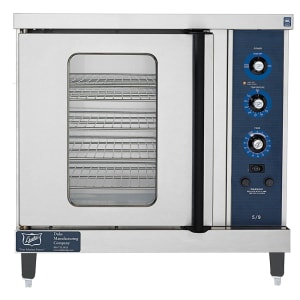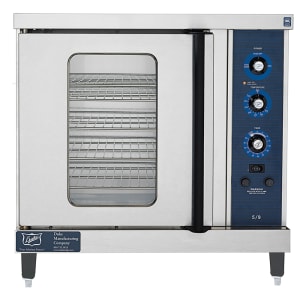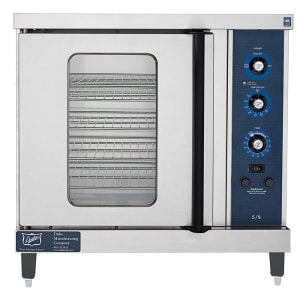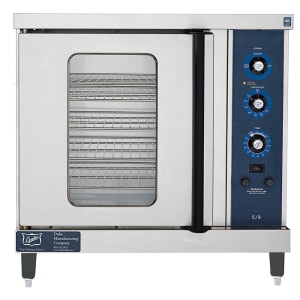Commercial Countertop Convection Oven
Countertop convection ovens are a great solution for operators who need to supplement floor models and those whose cramped kitchens need the power of convection without big footprints. Depending on your production needs, you may opt for a unit that accepts full-, half-, or quarter-size pans. More
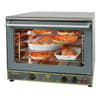
These can handle full-size sheet pans (18" x 26"), making them great for high-volume baking.

An oven that holds half-size sheet pans (18" x 13") can equip a restaurant to provide bread as an appetizer.
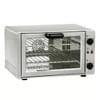
These hold quarter-size pans (9.5" x 13") for baking cakes and cooking small batches.
Commercial Countertop Convection Ovens: What You Need to Know
Countertop convection ovens can deliver faster cooking times than conventional ovens because they use fans to force heated air around the cooking chamber, helping break up the "cold halo" that surrounds food as it cooks. The fans also distribute heat more evenly, so there are fewer cold spots throughout the chamber, which means these units can provide more-consistent results and eliminate the need for rotating food during cooking.
Providing similar heating power to larger units in a design that takes up only a few square feet on a stand or table, countertop convection ovens are available in a number of sizes and power ratings. If you need even faster output than these units can provide, you may want to consider a high-speed oven, which combines multiple types of cooking technology to speed cook times.
Common Questions About Countertop Convection Ovens
What capacity commercial countertop oven do I need?
Pan capacity will likely be one of the most significant numbers for you to consider as it will determine how much you can bake in your oven at one time. Get an idea of how many pans worth of product you'd like to bake in one batch and make that a key consideration while you shop. The max pan size your countertop convection oven accepts is also something to consider. These ovens will often accept half-size and smaller pans, but some selections can fit full-size pans. The smallest ones can only accept quarter-size pans or smaller.
What do the power ratings mean?
BTU, which stands for British Thermal Unit, is a way to measure the amount of heat produced by gas-powered equipment. The higher the BTU rating of a given commercial countertop oven, the more powerful it will be and the more gas it will burn. Wattage is a similar measurement for electric equipment. High-powered equipment can cook food more quickly than weaker units and will have shorter recovery times, which means they will climb back to the set baking temperature sooner after you add cold product. High-powered equipment is preferred if you'll be cooking a lot of chilled and frozen food. For finishing and reheating, a lower-powered option will probably work just fine.
Should I get manual or digital controls?
Digital controls provide more customization for setting baking temperature and time. Most countertop convection ovens with digital controls are also programmable, with the ability to store cooking times and temperatures for common items that can be recalled with the push of a button. This feature reduces the chance for operator error and can prevent throwing away products because they've been baked at the wrong settings. Still, many operators prefer the simplicity and familiarity of the manual controls that are also available on these ovens.
Control location is important, too. Excessive heat from surrounding equipment can damage the electrical equipment. Indeed, one of the most common causes for repair calls on small commercial convection ovens is heat damage to the control components, so it pays to keep the controls of your oven away from the heat from ranges, charbroilers, and griddles. You can find ovens with controls on the left side, right side, or near the bottom of the unit.
What other features should I consider?
While it is common for manufacturers to build the interiors of their commercial countertop convection oven with steel or aluminum, some coat them in porcelain. Porcelain reflects heat from the burners or elements, spreading it out across the baking chamber and providing a more even bake to everything in the oven. Because porcelain is smoother than bare metal, it is easier to clean than steel or aluminum and should last longer without the potential for corrosion as long as the enamel stays on.
Most countertop convection ovens have only one door, but models with two doors will have either dependent or independent ones. Dependent doors both open when only one handle is pulled. On an oven with independent doors, each door opens separately. Dependent doors can make it easier to get pans in and out, but independent ones can conserve energy if only one is opened at a time.

